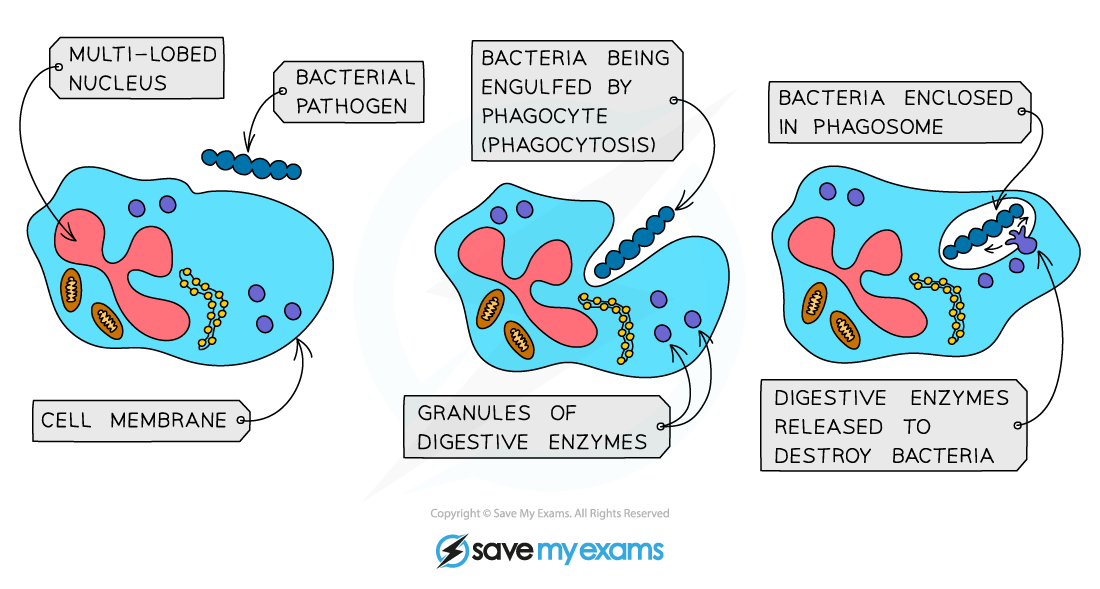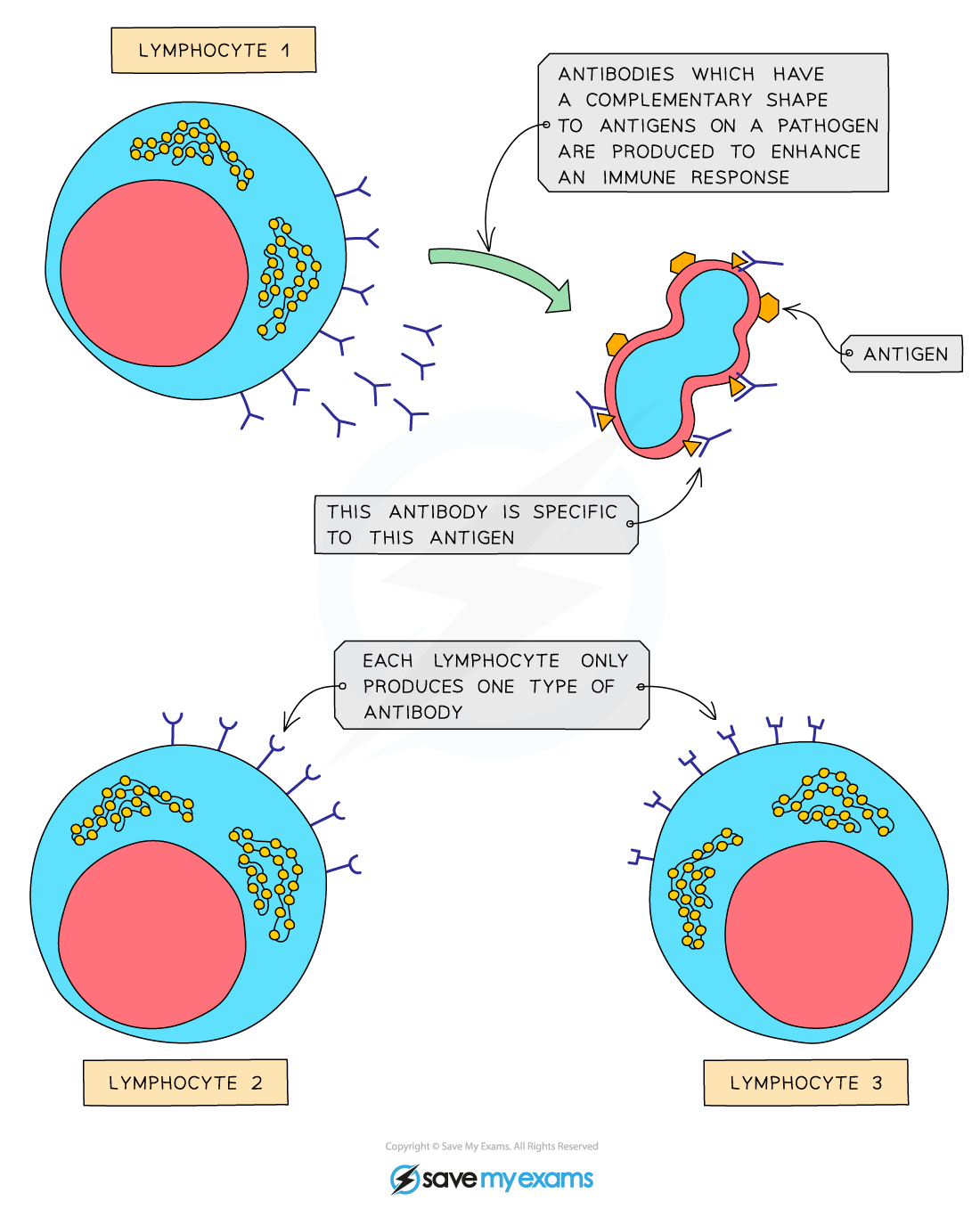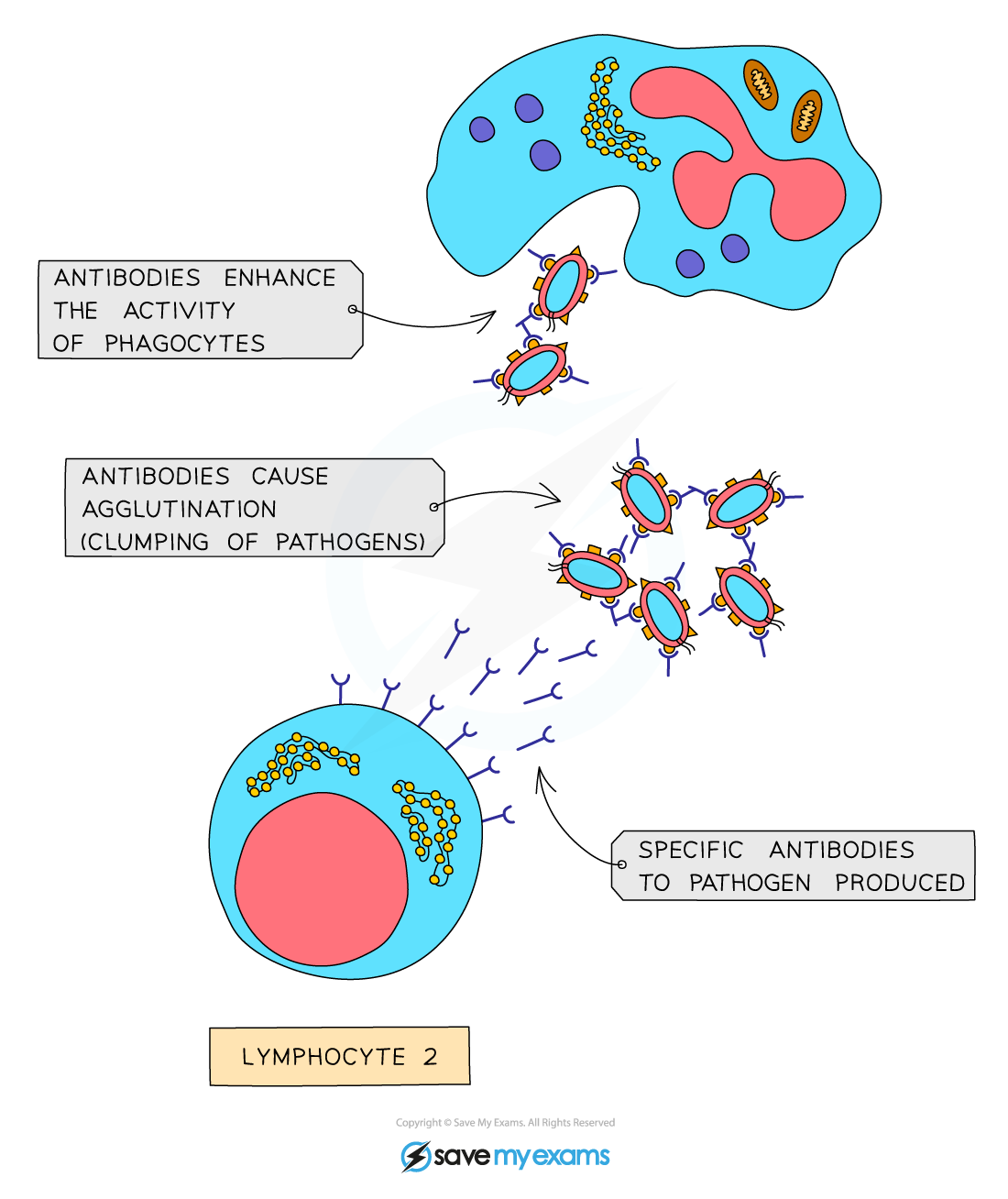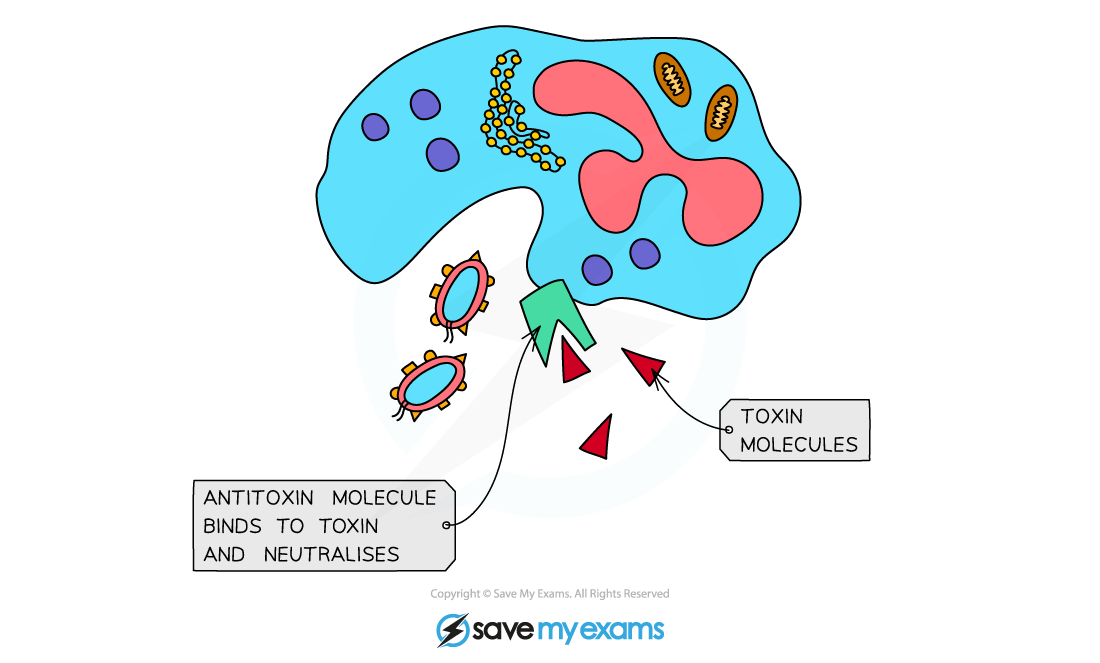- 翰林提供学术活动、国际课程、科研项目一站式留学背景提升服务!
- 400 888 0080
Edexcel IGCSE Biology 复习笔记 2.8.8 Human Transport Systems: White Blood Cells & Immunity
Edexcel IGCSE Biology 复习笔记 2.8.8 Human Transport Systems: White Blood Cells & Immunity
White Blood Cells
- White blood cells are part of the body’s immune system
- These specialised cells defend against pathogenic microorganisms
- There are two main types of white blood cell:
- Phagocytes
- Lymphocytes
Phagocytes
- Phagocytes carry out phagocytosis by engulfing and digesting pathogens
- Phagocytes have a sensitive cell surface membrane that can detect chemicals produced by pathogenic cells
- Once they encounter the pathogenic cell, they will engulf it and release digestive enzymes to digest it
- This is a non-specific immune response
- Phagocytes can be easily recognised under the microscope by their multi-lobed nucleus and their granular cytoplasm
 The process of phagocytosis
The process of phagocytosis
Lymphocytes
- Lymphocytes can easily be recognised under the microscope by their large round nucleus which takes up nearly the whole cell and their clear, non-granular cytoplasm
- Lymphocytes produce antibodies
- Antibodies are Y-shaped proteins with a shape that is specific (complementary) to the antigens on the surface of the pathogen
- This is a specific type of immune response as the antibodies produced will only fit one type of antigen on a pathogen
 The lymphocytes produce antibodies that are specific to the antigen on the pathogen
The lymphocytes produce antibodies that are specific to the antigen on the pathogen
- Antibodies attach to the antigens and cause agglutination (clumping together)
- This means the pathogenic cells cannot move very easily
- At the same time, chemicals are released that signal to phagocytes that there are cells present that need to be destroyed
 Agglutinated pathogens cannot move easily
Agglutinated pathogens cannot move easily
- Lymphocytes also produce antitoxins to neutralise toxins released by pathogens
 Lymphocytes produce specific antitoxins to specific pathogens
Lymphocytes produce specific antitoxins to specific pathogens
Immunity
- The body's immune system is highly complex, with white blood cells being the main component
- Once a pathogen has entered the body the role of the immune system is to prevent the infectious organism from reproducing and to destroy it
- An organism has immunity when they have sufficient levels of antibodies to protect it from a particular disease
- As a result, they do not suffer from the disease or its symptoms
Response to infection
-
- The pathogen enters the blood stream and multiplies
- A release of toxins (in the case of bacteria) and infection of body cells causes symptoms in the patient
- Phagocytes that encounter the pathogen recognise that it is an invading pathogen and engulf and digest (non-specific response)
- Eventually, the pathogen encounters a lymphocyte which recognises its antigens
- The lymphocyte starts to produce specific antibodies to combat that particular pathogen
- The lymphocyte also clones itself to produce lots of lymphocytes (all producing the specific antibody required)
- Antibodies cause agglutination of pathogens
- Phagocytes engulf and digest the agglutinated pathogens
- After the patient has recovered, they retain antibodies specific to the disease as well as memory cells (lymphocytes that recognise the pathogen)
- If the patient encounters the same pathogen again, it will trigger a secondary immune response
- Memory cells can produce much larger quantities of the required antibody in a much shorter time to fight off the pathogen before the patient suffers any symptomsThe stages of infection and the subsequent immune response are as follows:
Exam Tip
Make sure you know the difference between antigen, antibody and antitoxin:
- An antigen is a molecule found on the surface of a cell
- An antibody is a protein made by lymphocytes that is complementary to an antigen and, when attached, clumps them together and signals the cells they are on for destruction
- An antitoxin is a protein that neutralises the toxins produced by bacteria
转载自savemyexam


最新发布
© 2025. All Rights Reserved. 沪ICP备2023009024号-1








